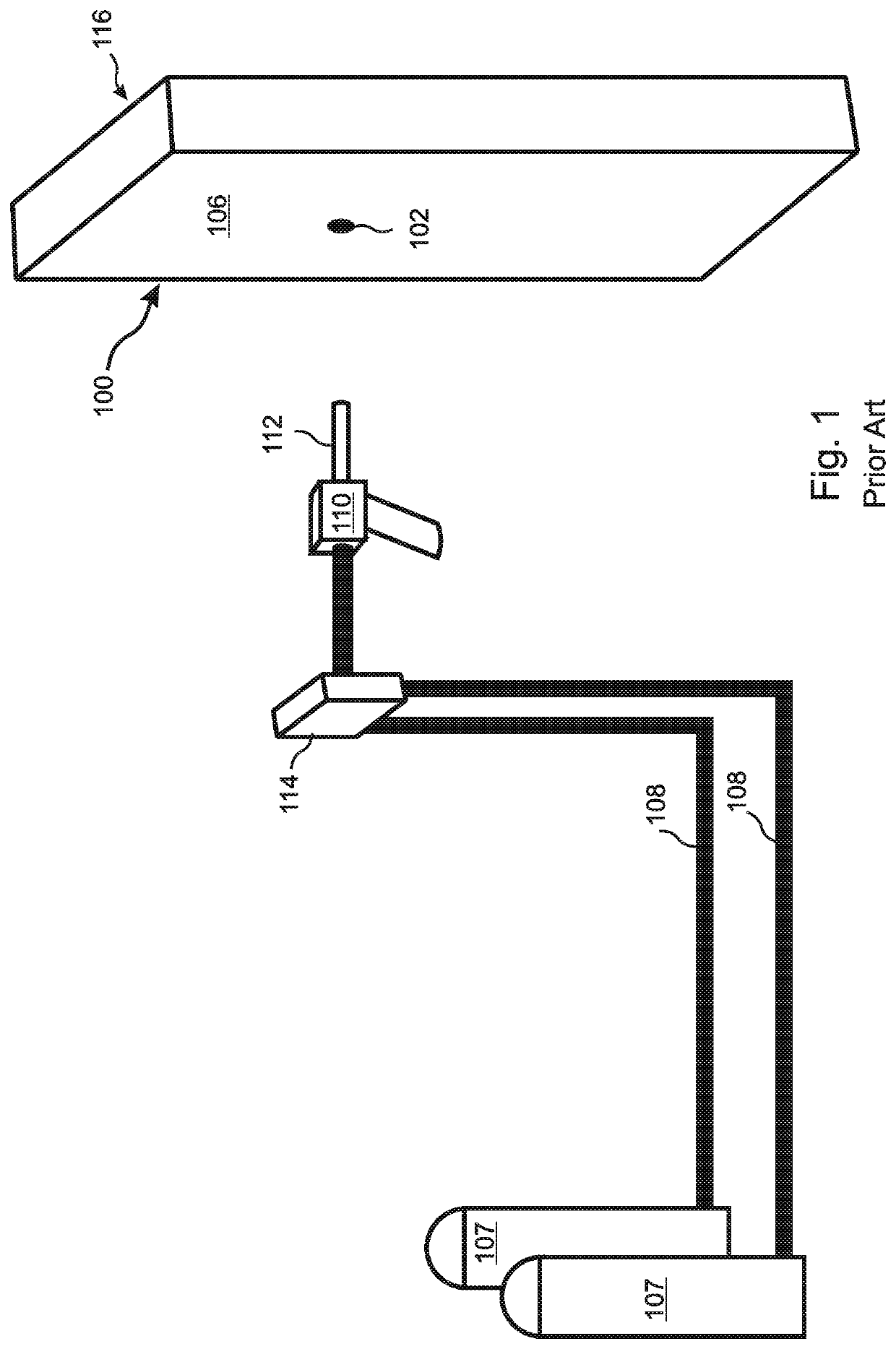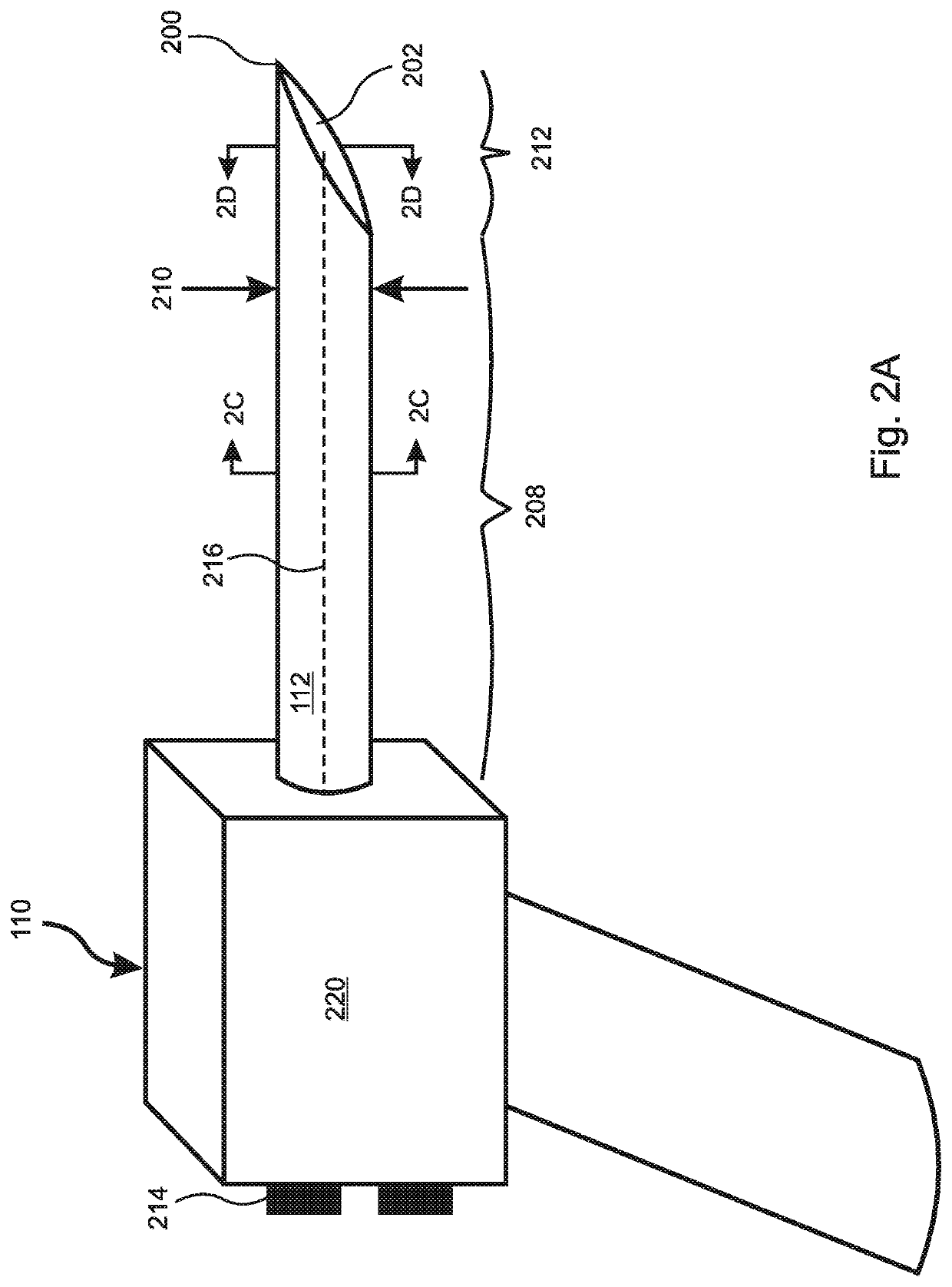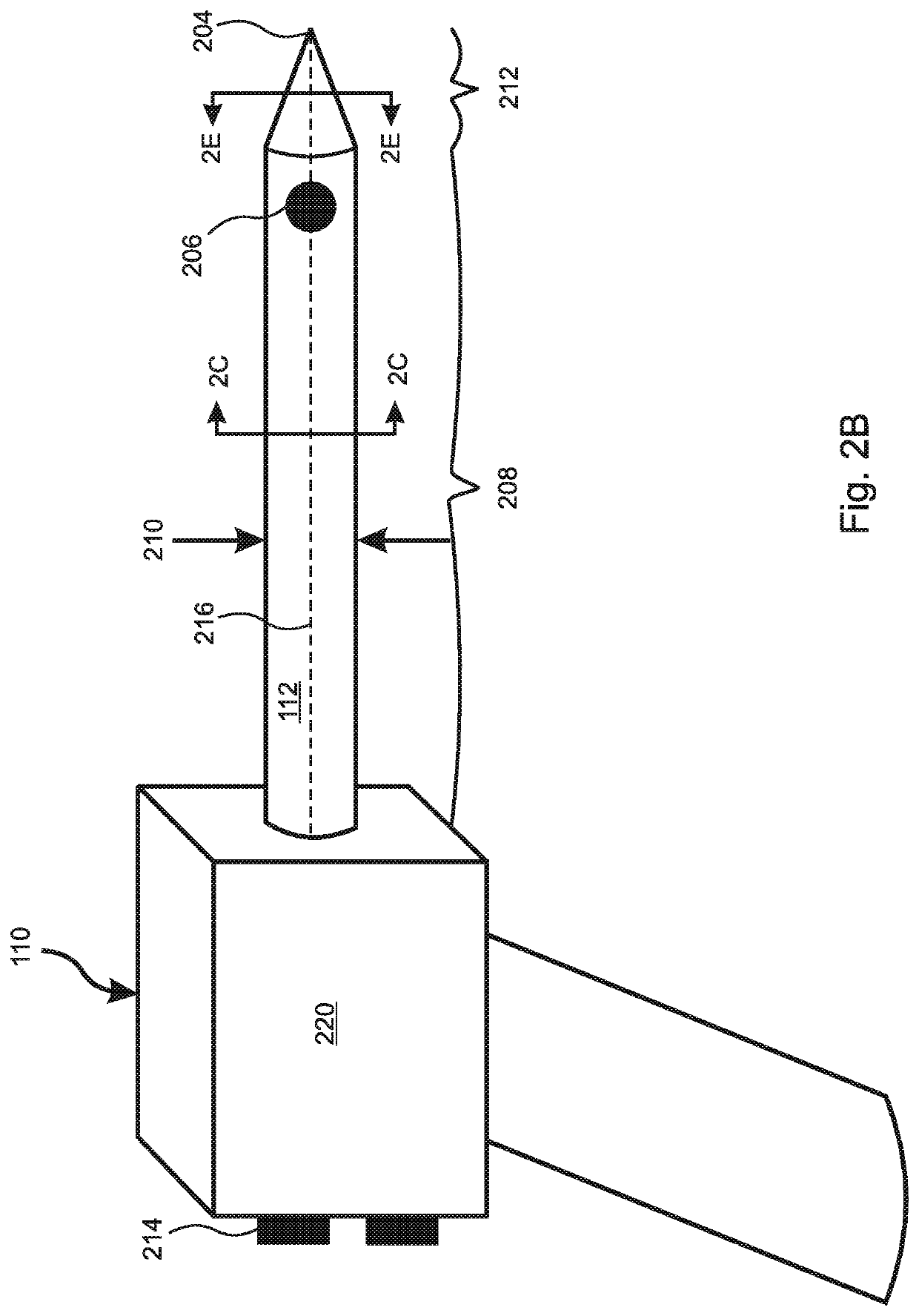Insulation injection device
a technology of injection device and insulation material, which is applied in the direction of heat-proofing, other domestic objects, building components, etc., can solve the problems of inaccessibility, poor insulation, high disruptive and expensive approach, and rarely used in practice, and achieve the effect of reducing cost and effor
- Summary
- Abstract
- Description
- Claims
- Application Information
AI Technical Summary
Benefits of technology
Problems solved by technology
Method used
Image
Examples
Embodiment Construction
[0072]The present invention is a building cavity insulation injection device that, in various embodiments, reduces the cost and effort required to create panel holes, avoids blockage of the injection nozzle, ensures that insulation is injected on a desired side of pre-existing insulation, enables injection of a wider variety of types of insulation and / or injection into a wider variety of cavity configurations without exchanging injection guns or nozzles, and avoids dripping of excess insulation on outer surfaces of cavity panels.
[0073]With reference to FIGS. 2A and 2B, embodiments of the present invention include an insulation dispensing gun 110 having a body 220 and a nozzle 112 that includes input ports 214 configured to receive one or more insulation precursors from precursor vessels (107 in FIG. 1) and to direct the precursors through a central passage of a nozzle 112 and out through a dispensing port provided at the end 202 of the nozzle 112, and / or on a side 206 of the nozzle ...
PUM
| Property | Measurement | Unit |
|---|---|---|
| thermal insulation | aaaaa | aaaaa |
| area | aaaaa | aaaaa |
| length | aaaaa | aaaaa |
Abstract
Description
Claims
Application Information
 Login to View More
Login to View More - R&D
- Intellectual Property
- Life Sciences
- Materials
- Tech Scout
- Unparalleled Data Quality
- Higher Quality Content
- 60% Fewer Hallucinations
Browse by: Latest US Patents, China's latest patents, Technical Efficacy Thesaurus, Application Domain, Technology Topic, Popular Technical Reports.
© 2025 PatSnap. All rights reserved.Legal|Privacy policy|Modern Slavery Act Transparency Statement|Sitemap|About US| Contact US: help@patsnap.com



